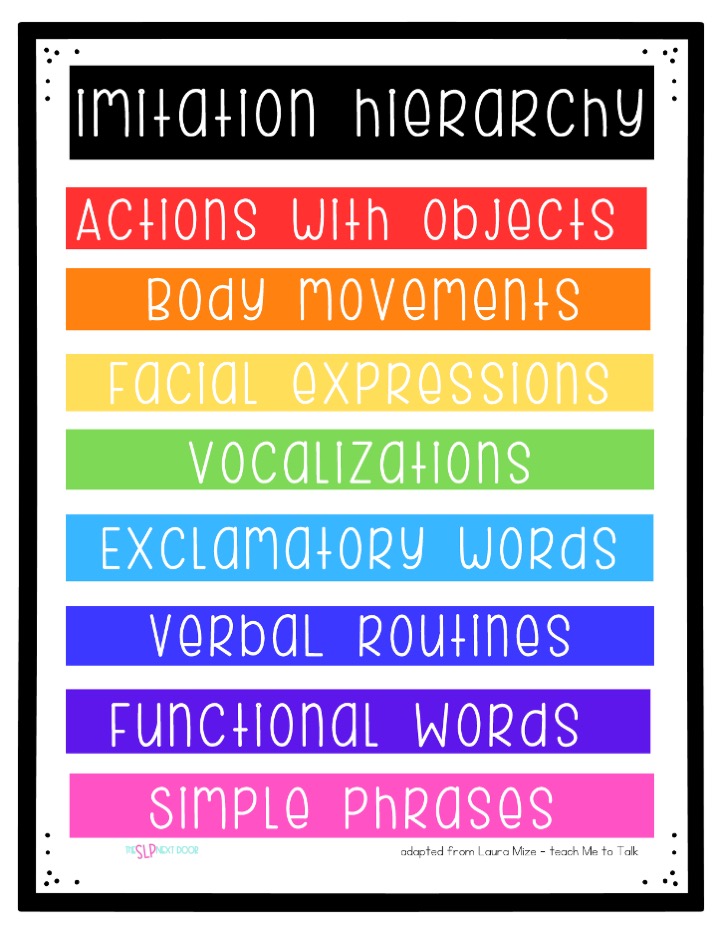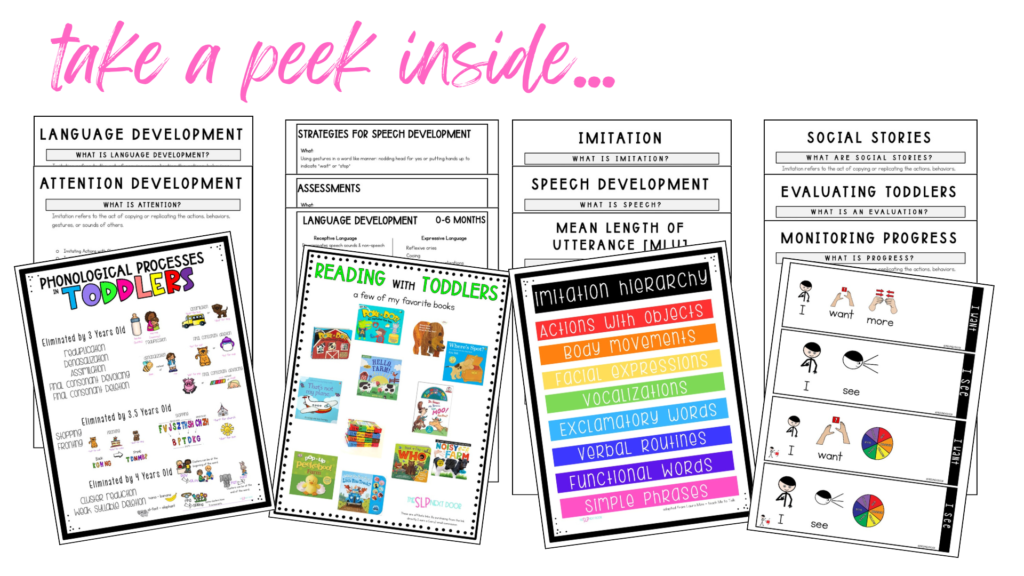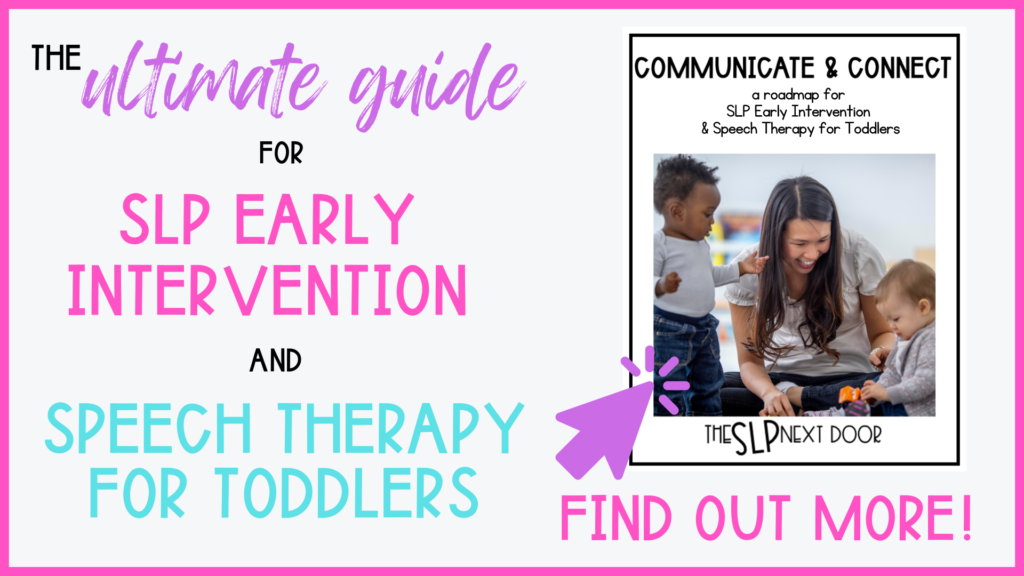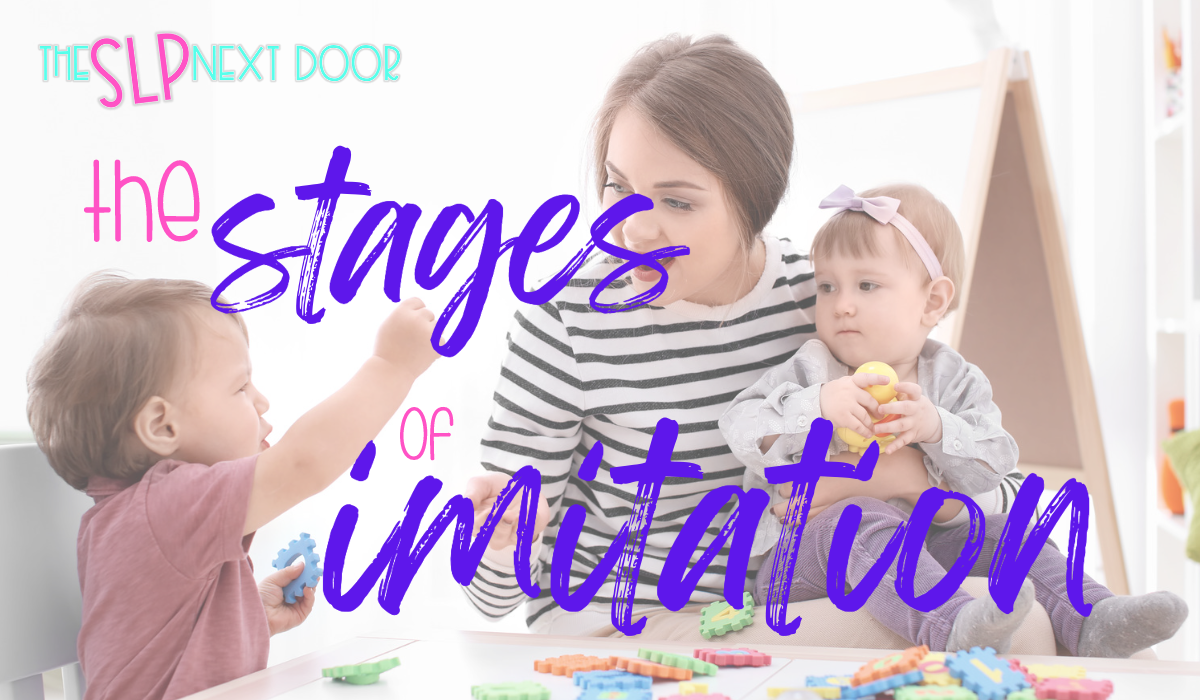Imitation is the ability to mimic and reproduce the behaviors of others. Imitation skills play a crucial role in development. From infancy to early childhood, children acquire and refine their imitation skills. In this blog post, we will explore the various stages of imitation development, from imitating actions to imitating simple phrases.
Imitating Actions with Objects
The first stage of imitation begins with infants imitating actions involving objects. Picture a baby playfully banging a spoon on the table. Through trial and error, they begin to understand cause and effect, learning that their actions can create a similar response. This stage sets the foundation for further imitation and cognitive development.
Imitating Gestures and Body Movements
As children grow and gain more control over their bodies, they begin to imitate body movements. From waving their hands, clapping, or stomping their feet, children imitate the gestures and physical actions of those around them. Imitating body movements promotes physical coordination and encourages social connections as they engage in shared experiences with others.
Imitating Facial Expressions
This stage enhances social bonding while laying the groundwork for emotional communication and empathy, as they begin to understand the power of nonverbal cues. It’s also a lot of fun to make funny faces!
Imitating Vocalizations
The ability to imitate vocalizations marks an exciting period. Babbling, cooing, and attempting to mimic simple sounds and words become the way of exploring language.
Imitating Exclamatory Words
As their vocabulary expands, toddlers begin imitating exclamatory words and phrases. They enthusiastically mimic the exclamations they hear, like “wow!” or “uh-oh,” demonstrating their growing understanding of the power of language to express emotions and capture attention. Other words that fall into this category are animal sounds (mooo, baaa, bock-bock) and environmental noises (vrrrm, beep-beep).

Imitating Verbal Routines
As language skills become more advanced, toddlers and preschoolers start imitating verbal routines and short phrases. From nursery rhymes to repetitive phrases they hear in their daily lives, they eagerly imitate familiar patterns and structures.
Imitating Functional Words
Children then progress to imitating functional words, such as “please,” “thank you,” and “sorry.” They begin to grasp the social significance of these words and their power to convey politeness and empathy. Through imitation, they not only acquire essential social skills but also learn the importance of using language to navigate various social contexts.
Imitating Simple Phrases
This stage of imitation encompasses imitating simple phrases, where children string together words to form basic sentences. As they imitate and internalize more complex language structures, their journey of language acquisition takes a significant leap forward.
Dynamic Development
Imitation, though often discussed in distinct stages, is a dynamic process characterized by concurrent skill development. Toddlers effortlessly engage in multiple imitative behaviors, showcasing their cognitive flexibility, social acuity, and linguistic growth. For instance, while playing with objects, a child might imitate not only the actions they observe but also the exclamatory words they hear from others.
While some may demonstrate concurrent imitation early on, others may master one skill before integrating others. Individual differences in learning styles and environmental influences contribute to the unique journey of a child’s development.
Activities to improve imitation skills should start with simple and familiar actions or sounds that are within their current abilities. Visual prompts can be helpful in supporting imitation skills. That’s why I created these imitation cards!

Like with any skill, repetition, and practice are key to developing imitation skills. Provide frequent opportunities for them to practice imitating actions or sounds in various contexts. These cards are a fun way to do just that!
Level 1 focuses on simple actions such as clapping, waving, and jumping, while also engaging in the fun of imitating sounds like animal noises, and vehicle sounds.
Level 2 takes it to the next level combining actions or objects and sounds. Children will have a blast imitating actions and objects with their corresponding sounds.
Get your set of imitation cards here!
Want to know more about language and communication in those crucial first 4 years of life? Check out my handbook and guide to language development and speech therapy for toddlers! In addition to more in-depth information about imitation development, you’ll find handouts for major milestone development, language acquisition, encouraging parent involvement, activities for prelinguistic skills, and more!





One Response